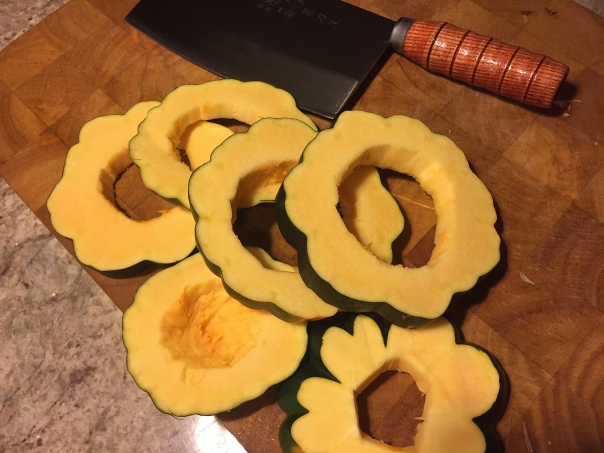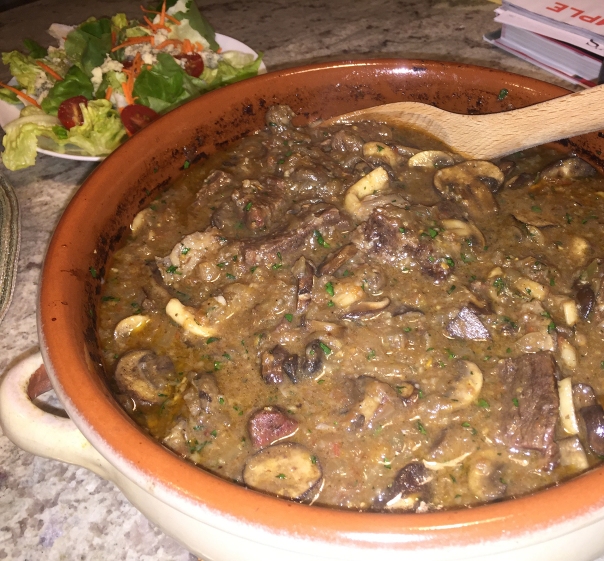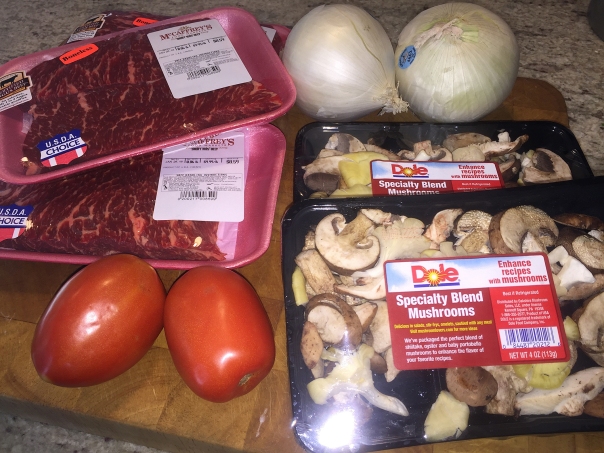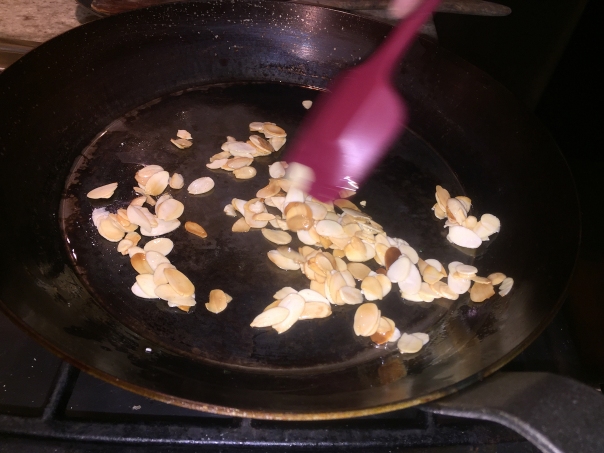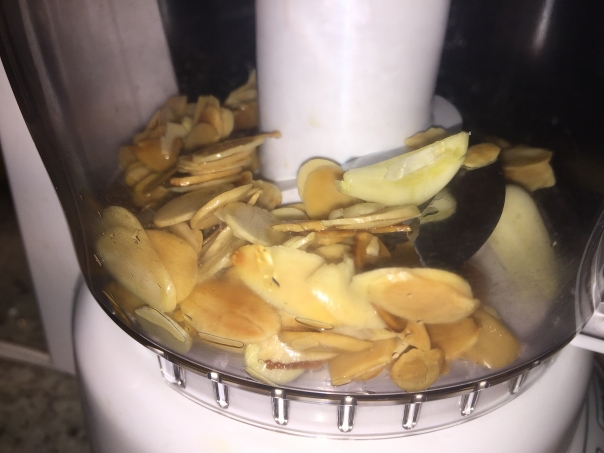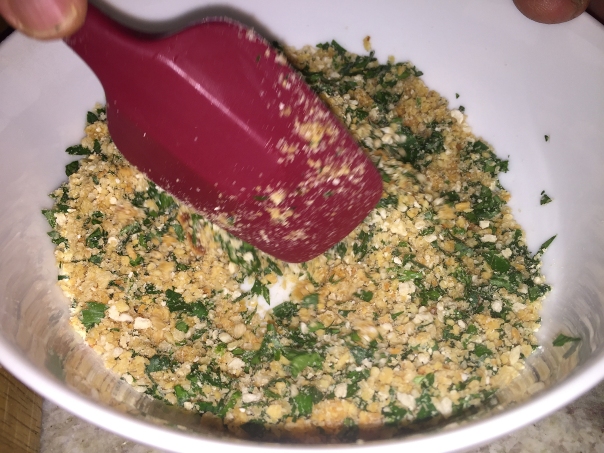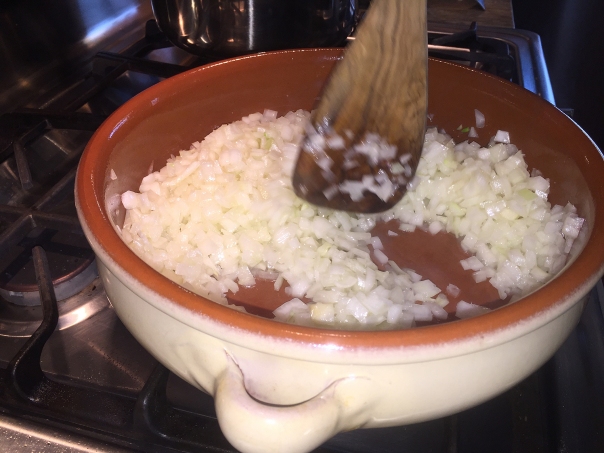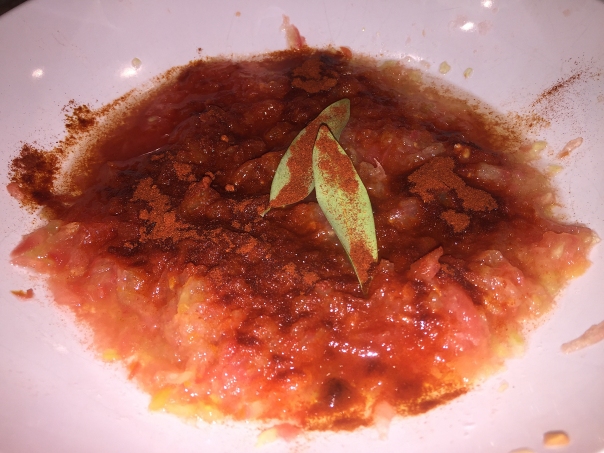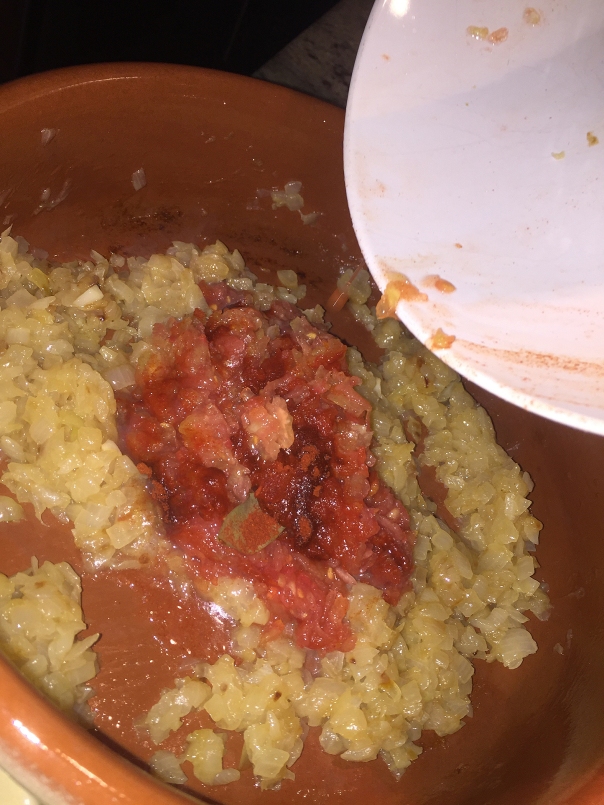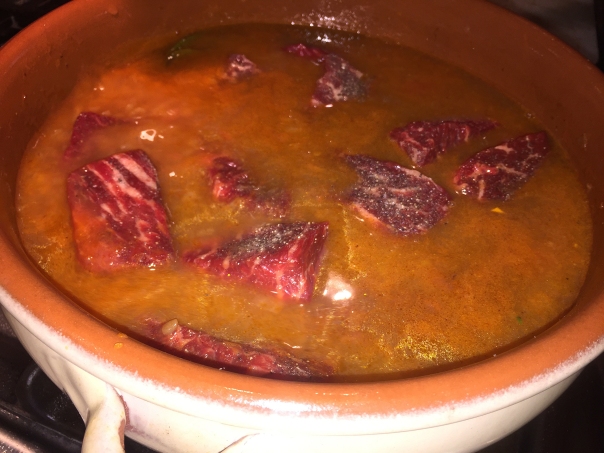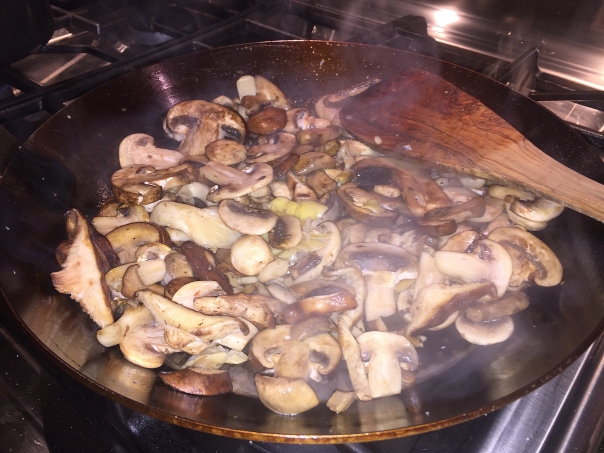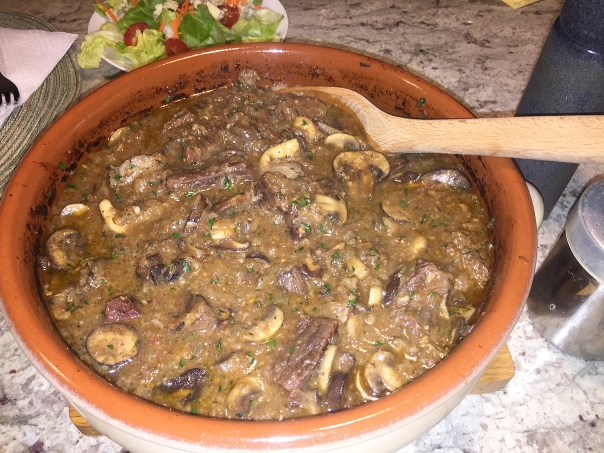
At any given time I have a bevy of 50-75 blogs in the bank. While wading through them recently, I found this one which I wrote some time ago, so I thought I’d dust it off and put it out there…
Russ came flying into the house after a work appointment with a bag of groceries—and less than an hour to prepare, cook and eat dinner before he had to leave for another commitment. The night prior he had taken 2 thick bone-in pork chops out of the freezer (the bones add valuable flavor to the meat and prevents it from drying out) with the intention of adding a veggie and other side dish to round out the meal—thus the contents of the grocery bag.
While he chopped, diced, sautéed and baked, I was upstairs (probably writing another blog) and I could hear him blazing trails down in the kitchen. The end result? Perfectly done pork chops with an impromptu, super-delicious pan sauce, tender-crisp asparagus, and mushroom rice pilaf. Mentally, I didn’t think this meal would be blog-worthy. But boy, was I ever wrong! The chops with pan sauce were outstanding. Although I didn’t take any photos (those shown here are stock photos), it certainly deserved a blog about Russ’ talents as a chef.
After dinner, I offered to do KP duty while he ran off to his next meeting. The Food Network station was on TV (surprised??) airing a segment of Chopped. Whenever I watch this show, I’m always amazed at how quickly the chefs throw together an odd assortment of ingredients with astonishing results in record time. Thus the connection to what just transpired in our kitchen. Perhaps I should sign Russ up? Well, that’s another blog…
Anyway, I’ll let Russ tell you in his own words how he prepared those succulent chops:
My favorite way to prepare thick-cut pork or veal chops and steaks is pan roasting. Simply put, pan roasting involves searing the room-temperature meat that has been seasoned with salt and pepper (or my favorite, adobo seco) in a heavy, preferably cast iron, (or carbon steel) skillet over medium-high to high heat until nicely browned on both sides—about 2 minutes each side—and then putting the skillet in a pre-heated 425 degree oven and roast until the meat is 5 degrees lower than your desired internal temperature. This is usually about 10-12 minutes in the oven depending on the thickness of the meat. Here’s a good resource that shows the technique: http://www.reluctantgourmet.com/pan-roasting-technique/.


Once the chops were done, I covered them lightly with foil on a plate and then set about making a simple Dijon mustard and cream pan sauce. I drained the fat through a fine strainer and returned any of the browned bits to the skillet, then set the skillet over a medium burner. I deglazed the pan with about a ½ cup of dry vermouth (you can use dry white wine, too) and scraped up the fond in the pan. After allowing the vermouth to reduce by half, I added a ½ cup of chicken broth and a teaspoon of dried thyme, allowing the mixture to reduce slightly before whisking in a heaping tablespoon of Dijon mustard and 2 tablespoons of heavy cream. Once the mixture was simmering happily, I removed the pan from the heat and whisked in two tablespoons of unsalted butter (always a good finish for a pan sauce) and adjusted the sauce to taste with salt and pepper.
Well there you have it! Thanks Russ for the step-by-step directions to fabulous pan roasted pork chops!



